Mäetagused vol. 82
Summary
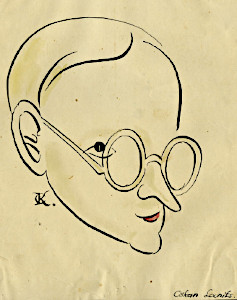
-
Portrait of Oskar Loorits in the light of reports submitted to the University of Tartu
Tiiu Jaago
Associate Professor Department of Estonian and Comparative Folklore Institute of Cultural Research, University of Tartu, Estonia
tiiu.jaago@ut.ee
Keywords: Estonian Folklore Archives, Estonian folklore, Oskar Loorits, scholarship holder of the University of Tartu, teaching folkloristics at the University of Tartu
Oskar Loorits (1900–1961) is an Estonian folklore researcher, who is primarily known as the researcher of the folk tradition and religion of the Livonians, and as the founder and the first director of the Estonian Folklore Archives, founded in 1927. His connections with the University of Tartu have been discussed to a lesser extent. The article is based on the materials of the University of Tartu, mainly personnel records, stored in the National Archives of Estonia. Loorits was admitted to the University of Tartu in 1919, i.e., the same year the university adopted Estonian as the language of instruction instead of Russian and German. This involved the opening of new chairs, including the Chair of the Baltic Finnic Languages and the Chair of Folkloristics. Loorits specialised in Baltic Finnic languages and graduated with a master’s degree in 1923. Thereafter he started doctoral studies, while also changing his specialisation. In 1926, he presented his research on Livonian folk religion, for which he was awarded a doctoral degree in folkloristics. In 1927, he submitted the papers required for habilitation to the university and received the right to work as a lecturer at the university. From 1927 to 1942, he worked as an associate professor of folkloristics at the University of Tartu. In 1944, he left Estonia for Sweden. The article looks at the activities of Loorits at the University of Tartu in the period 1919–1942. As he received a scholarship from the university for both studies (1921–1923) and research (1923–1927), he had to present a report of his completed work to the university’s Faculty of Philosophy and to the university’s government at the end of each term. As he worked at the university at an hourly rate, he continued reporting until the Soviet power was established in Estonia in the summer of 1940. Besides factual information, his reports contain a remarkable amount of information on his personal development. These reports reflect Loorits’ keen eye for research problems and opportunities and reveal his great work ability and strict self-discipline. He was able to manage large research fields as he saw possibilities for organising them. He was a strict lecturer, although supportive of young researchers when they were successful. Loorits’ reports and the accompanying documents also provide an insight into the everyday life at the university of the 1920s–1930s. One can see that at the beginning of the period, the comparative method was predominant (this research method was represented by the professor of folkloristics Walter Anderson), and then the research methods based on the tradition group and presentation (Loorits) and the poetics of folklore (August Annist) were added. This was a period of significant advancement of research and science. While Loorits was able to see potential research perspectives and apply new research methods, his work was also theoretically innovative and shaped the future folklore research.
-
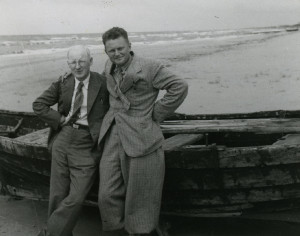
-
Oskar Loorits and his fellow travellers
Mall Hiiemäe
Fellow Emerita, Estonian Folklore Archives Estonian Literary Museum
mall.hiiemae@folklore.ee
Keywords: animism, Estonian Folklore Archives, Livonian folklore, national ideology, nature nation, religious phenomenology
Oskar Loorits (1900–1961) was a versatile researcher who in international folkloristics was mainly known for his religious studies. He developed an interest in folk belief in his student days at the University of Tartu, where he had a chance to participate in an expedition and record Livonian folklore. Already in 1926 Loorits defended his doctoral thesis on Livonian folk belief. He also became one of the advocates for the cultural identity of the small Livonian nation. On Loorits’s initiative the Estonian Folklore Archives were established, which assembled older folkloric collections; also, the managing system was created and collections were supplemented. By the beginning of World War II, it was an internationally known and smoothly operating institution. Loorits left for Sweden and continued work in exile.
The majority of Loorits’s research uses comparative-historical methods, in comparison with the folkloric material of the peoples of the world. Most of his research was published in German: Livische Märchen und Sagenvarianten (1926), Der norddeutsche Klabautermann in Otsbaltikum (1931), Pharaos Heer in der Volksüberlieferung I (1935), Gedanken-, Tat- und Worttabu bei den estnischen Fischern (1939), etc. Some of the most renowned works, which have also received criticism, are, for example, Eesti rahvausundi maailmavaade (Estnische Volksdichtung und Mythologie (1932)) and Grundzüge der estnischen Volksglaubens, which was compiled in Sweden in 1943–1960.
As a personality, Loorits was impulsive in expressing his ideas, as well as articulate and remarkably persuasive. These features characterize his cultural and socio-political journalistic works. As a national ideologist, Loorits was interested in defining the ancient worldview of Estonians and Finno-Ugric peoples, yet idealized the centuries-long tenacity of the principle of animistic equality. It is not surprising that his ideas about Estonians as a nature nation gave rise to debates and are also under discussion today in connection with the problems of the sense of identity, environmental protection and nature conservation.
-
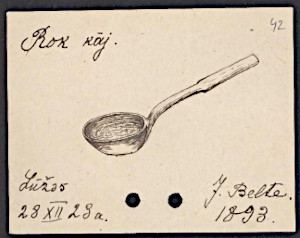
-
Oskar Loorits’ collection of Livonian folklore
Tuuli Tuisk
Research Fellow in Phonetics of Finnic Languages Institute of Estonian and General Linguistics University of Tartu
tuuli.tuisk@ut.ee
Keywords: Estonian Folklore Archives, ethnography, folk belief, folklore, language, Livonian, manuscript, Oskar Loorits
The Estonian Folklore Archives of the Estonian Literary Museum hold a valuable collection of Livonian ethnography and folklore – Oskar Loorits’ collection of Livonian folklore. Oskar Loorits started his journey to Livonians and the Livonian language in 1920, when he participated in a Livonian expedition in Courland as an assistant to Lauri Kettunen, professor of Finnic languages at the University of Tartu. His great interest in Livonians and the Livonian language, Livonian ethnography and folklore developed during this expedition. The Livonian folklore collection is valuable material concerned with the Livonian language and culture. The materials were mostly collected in the 1920s from 12 Livonian villages. The article provides an overview of the collection that physically consists of folders and file boxes in quarter format. The materials include both Livonian folklore texts and their translations. An important component part is the Livonian ethnographic dictionary. In 2013, the digitalization of materials started. The entire physical collection and its partially digitized materials are available to anyone interested.
-
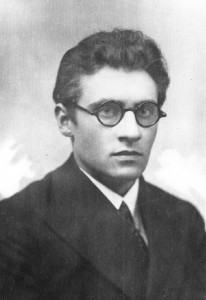
-
Journey to the living folk song: Development of Herbert Tampere’s scholarly personality
Taive Särg
Senior Research Fellow Estonian Folklore Archives, Estonian Literary Museum
taive@folklore.ee
Keywords: ethnomusicology, folk song, Herbert Tampere, Oskar Loorits, regilaul, traditional music
The article analyses the life and activity of Estonian ethnomusicologist and folklorist Herbert Tampere (1909-1975), as well as the research history of Estonian folk songs until 1945, also paying attention to the influence of the Estonian Folklore Archives and its head Oskar Loorits. The historical background to Tampere’s activity is the establishment of independent statehood in Estonia (1919) after Estonians had existed as an ethic minority group subjected to the ruling classes of other nationalities for hundreds of years. The scientific and cultural background is constituted by the development of European folkloristics and ethnomusicology and the increasing prestige of folk music and non-western music in Europe, which contributed to the rise of the cultural self-awareness of
Estonians as a nation with oral lore different from Indo-European culture. The approach is framed with the metaphor of life and death, which in Herderian way of thinking corresponded to the growth and fading of a nation and its creation. In the 1930s, Tampere brought into the discourse of the Estonian folk song, seemingly in opposition with the gradual fading of the living lore and complaining thereabout, a turn in writing about it, unexpectedly confirming that the folk song was alive.
The older folk song started to disappear from public use in the 19th century, when people lost interest in its performance and the newer European folk music style spread more widely. At the same time, they tried to overcome the national inferiority complex that had developed due to existence as a lower class, as well as the oral culture considered as a sign of backwardness, creating on the basis of folklore a new national-language and valuable European literary culture. To accomplish this, the old, evolutionally lower traditional culture had to be abandoned. Writings about the dying folk song helped to encourage people to collect folklore and create distance with the past. In the 20th century, with the development of Estonian national self-awareness and literary culture and the rise of the nation’s self-esteem, and on the other hand the recession of Eurocentric and evolutionist way of thinking in the world of science, a new interest appeared in the structure and performance of the folk song, and it started to be increasingly appreciated and considered as living. Such changes in rhetoric indicate how reality is reflected subjectively, according to standpoints and circumstances.
Considering the fact that in the 19th-century social evolution theory folklore and literary culture were attributed to different development stages of a nation, the nation with low self-esteem, striving for literary culture in the 19th century, could be satisfied with the dead folk song, yet in the 20th century, in the light of new culture concepts, it could be declared alive again. In summary it can be said that the following factors helped Tampere achieve a novel approach to folk songs in his research.
1. Tampere came from a talented and educated rural home, in which music and literature were appreciated and in whose neighbourhood different music styles were practised. His interests and skills were shaped by good education at schools with remarkable music teachers and an early contact with folklore collection at the Estonian Students’ Society.
2. Good philological education from the University of Tartu and work at the Estonian Folklore Archives, becoming familiar with folklore collections as well as other young folklorists and linguists, especially cooperation with Oskar Loorits, Karl Leichter, and Paul Ariste, added knowledge of newer research trends, such as ethnology and experimental phonetics. Maybe, paradoxically, the absence of higher music education, which would have directed the young man towards other music ideals, was positive in this respect.
3. The knowledge acquired of the methods and way of thinking in comparative music science provided a theoretical basis for understanding, valuing, and studying non-western music. Professional work was also supported by the development of sound recording and -analysis.
4. The immediate contact with living folk music already in his childhood and later on, when collecting folklore, elaboration of folk songs in the archives and compiling voluminous publications made this manner of expression more familiar. Tampere must have enjoyed the performance of at least some of the regilaul songs as he mentioned nice impressions and the need to delve deeper; also he recorded, studied, and introduced these songs to the public.
5. The heyday of national sciences and national ideals in the Republic of Estonia valued engagement in folklore as the basis of cultural identity. The first folk music reproductions appeared, such as folk dance movement and runic verse recitals at schools, which was why the issues of performance started to be noticed and studied. Oskar Loorits supervised the study and publication of the most Estonian-like (in his own opinion) folklore – folk songs – and it was probably also his influence that made Tampere study the problem of scansion, to systematize and study folk songs, and compile publications.
-
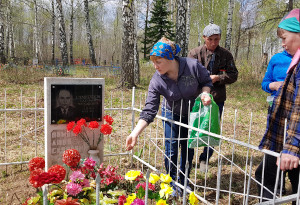
-
Victory or mourning? Ambiguity of Russian 9 May celebrations as seen in a small Udmurt village
Eva Toulouze
Professor National Institute for Oriental Languages and Civilizations (INALCO), France Research Fellow in Ethnology University of Tartu, Estonia
evatoulouze@gmail.com
Keywords: 9 May, mourning, commemoration, Victory Day
Each year on 9 May Russia celebrates Victory Day with great grandeur and pathos. However, it is difficult to realize from afar how deep the roots of this pathos are and what it actually means for people to participate in these celebrations. It is also worth mentioning that, besides drilled marching and national pathos, people in some villages are used to combining Victory Day celebrations with the spring commemorations of the dead.
-
-
Gods in wars: Divine support and the theological justification of war in ancient Anatolia and North Syria
Vladimir Sazonov
Associate Professor in Ancient Near Eastern Studies University of Tartu Senior Research Fellow, Estonian Military Academy Research Fellow, Estonian Academy of Security Sciences
vladimir.sazonov@ut.ee
Joanna Töyräänvuori
Associate Professor Centre of Excellence in Ancient Near Eastern Empires (ANEE) University of Helsinki
joanna.toyraanvuori@helsinki.fi
Keywords: Alalaḫ, Anatolia, divine support, gods in war, Hittites, justification of war, North Syria, Ugarit
As we can see, divine support, divine intervention, and an ideology of (divine) warfare developed in the Hittite world throughout the whole of Hittite history and became better formulated and more complex with the passing of time, reaching their apex during the New Kingdom Period. If we can observe barely any divine support for Anitta’s deeds in the Text of Anitta, then Ḫattušili I, who ruled 100 years later, already elaborated this phenomenon more explicitly and referred to gods in support of his aggressive politics and military actions (The Annals of Ḫattušili I). The phenomenon of divine support for war can be found in an even more sophisticated and developed manner during the New Kingdom, in the Annals of Tudḫaliya I, in the Manly Deeds of Šuppiluliuma and in the annals written by Muršili II, etc. In some cases, we even have outright theological justification of wars. As we can see, ideology, religion, and theology played an insignificant role in conflict and warfare and especially in the divine support of war in Hittite Anatolia at the time of Anitta in the 18th century BCE. This, however, changed dramatically across the time, and in the Annals of Ḫattušili I, the role of gods increased considerably, and the king began to refer to the gods in justification for his actions (also in war). Later, in the epoch of the New Kingdom, since the time of Tudḫaliya I, and especially since Muršili II, the role of the gods became even more elaborate and sophisticated, and the kings mention several gods or a group of gods, instead of only two or three of them (as was done by Ḫattušili I) which helped them in wars and in military campaigns. We have several pieces of evidence from Hittite sources in which the ruler uses proper theological justification for his military campaign or for the invasion of another country, and the most elaborate of these are the annals of Muršili II.
Similar themes of divine support and the occasional theological justification of war are also found in the texts of the vassal kingdoms of the Hittite Empire, with the exception that, on the ideological level, the Hittite kings were the representatives of the gods for the Syrian kings. This is a clear difference between the texts from the core area of the Hittite Empire and the texts from the kingdoms of the Hittite ambit. Many of the wars fought by the major international players of the Late Bronze Age were fought on the battlefields of North Syria, which is why war is a common occurrence in the texts of the peoples based there. Unlike in the Hittite texts, the petitioning of the gods before military undertakings is a common trope in the texts from Ugarit and Alalaḫ. The same may have been true of the other Syrian vassals of the Hittite kings, but fewer texts have remained from them. These petitions were also accompanied by rituals meant to ascertain good fortunes in war. The petitioned deities changed depending on the place of origin of the petitioner and the place that was attacked. Both one’s ancestral gods and the gods of the enemy needed to be respected for a campaign to be successful, and peace could also be made on behalf of the gods of both parties only. In the North Syrian kingdoms, proper conduct of war concerned not only the present but also the past and future generations. A victory or defeat could be decided by the conduct of one’s ancestors, and teaching one’s descendants the proper way to petition the gods for success in war was supremely important. While the storm god was likely the most important deity concerning the theological justification of war among the North Syrian kingdoms, this role of the god is not always clearly formulated in the texts. Goddesses were also petitioned for success in war, but there was a clear difference in how common soldiers and kings apprehended the gods, especially the widely popular warrior goddess Anat. While soldiers and warriors looked to the goddess for success in battle, she functioned as the nursemaid of the king. While the petitioning of divine support for military undertakings was likely shared by kings across the entire ancient Near East, Anatolia and North Syria formed a cultural ambit where influences were readily exchanged both from Anatolia to Syria and from Syria to Anatolia. In the texts from these areas, we can see details and motifs that are particular to either region but also themes that are shared by both areas. It is noticeable that the political relationship of overlord and vassal or subject kingdom can be seen not only in the political correspondence of the kingdoms but also on the ideological level, in the texts that the Hittites wrote for their own gods and the Syrians wrote for theirs. The hierarchical relationships of the kingdoms of Anatolia and North Syria are so ingrained that they influenced the very core of how the divine support of war was formulated in the texts.
-
About us
-
 Old Udmurt customs are first reviewed in cities
Old Udmurt customs are first reviewed in cities
Interview with Galina Glukhova
Udmurt folklorist Galina Glukhova works as guest researcher at the Department of Folkloristics of the Estonian Literary Museum from 21 February to the end of May 2022. The current dean of the Institute of Udmurt Philology, Finno-Ugric Studies and Journalism of the Udmurt State University is in Tartu in connection with the kindred people’s project “Mumming in Udmurt Culture”. Glukhova’s main fields of interest are related to Udmurt and Finno-Ugric folklore, calendrical traditions, mythology, and Udmurt literature. Interview with the Udmurt researcher was conducted by Agnes Neier.
News, overviews
-
- Autumn school studied the phenomenon of magic through time
Reet Hiiemäe gives an overview of the international interdisciplinary autumn school “Dialogues with Magic”, organized for postgraduate students of the humanities on 11–12 November 2021.
The Soviet period in Estonians’ memories through the eyes of a Finnish researcherTiiu Jaago introduces Wiivi-Maria Jouttijärvi’s doctoral dissertation “Muistojen ja kansallisen historiakulttuurin rajapinnoilla: Viron neuvostoaika kolmen sukupolven kertomana” (At the interface of memories and national history culture: Soviet era in Estonia narrated by three generations), defended at Jyvaskyla University on 10 December 2021.
Highway to Hell? 65th Kreutzwald Days, Medica XIVAn overview of the international hybrid-form conference by Katre Kikas.
- Autumn school studied the phenomenon of magic through time
-
-
Calendar
A brief summary of the events of Estonian folklorists from December 2021 to April 2022.